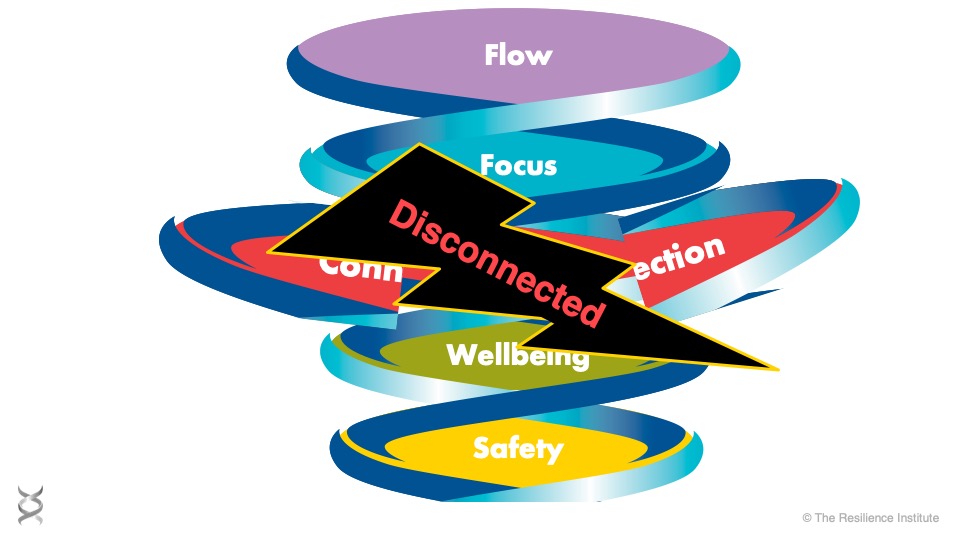
How to Improve Virtual Connection
Sustain the messy, transformative work of real connection
One day last week, like many of you, I spent fifteen hours on a computer. This included four group webinars (one of which was a hundred faceless people), six Zoom meetings, and the normal transactional activity of small business. Closing my screen at 7pm, I felt strangely discombobulated. It felt tired (mental fatigue), listless, unsatisfied and dissociated. I call it “LIMBO”. I think you have experienced it.
This is a symptom of disrupted connection.
Most of us have been locked down for six weeks. While a few lucky families and businesses share common space, the rest have to make do with digital communication. These virtual platforms are nothing short of miraculous. They have improved dramatically. We now expect a seamless flow of voice, face and digital gimmicks.
The efficiency gain is stunning. One can deliver a half day intervention with a group at 10% of the cost. Taxis, airports, hotels and endless downtime vaporised for multiple participants. Evaluations can match face-to-face. Three hours delivers the same net revenue as a two-day journey.
Organisations are just beginning to realise how effective and efficient virtual meetings have become. It is almost certain that many of us will continue to work from home and that much of our future communication will be digital and transactional. Training, sales, negotiation, planning and coaching will become predominantly virtual.
Face-to-face connection will reduce dramatically.
For millions of years, primates have evolved as social species. We could only survive the harsh ecosystems in small family groups and tribes with periodic inter-group exchange. We communicated in a physical cocoon of smells, touch, eye contact, grooming, posturing, grunting, seducing and dominating/submitting.
In suits, we follow formal protocols to book a time, place, dress-code and still we are close. We shake hands, gesticulate, and dance with our eyes, expressions, vocal tones and postures. Smell and grooming have dropped into the background but still play out.
Together in space and matter, we connect and transform each other.
On screen, it is very different. If lucky, we have an image large enough to detect eye movement and facial expressions. The concentration required to track this instinctive flow of information is huge. Delays in voice and image create interruptions in flow that trigger doubt, irritation and dismissive judgements. Feedback loops and trust fail.

Digitised on screen we transact deprived of meaning.
From a biological perspective, we are ripping apart the very fabric of what makes us human. We must be cautious, wise and deliberate in mastering this inevitable transition that Covid-19 has thrust into warp speed.
Take special care of intimate relationships.
In family and homes:
- Create shared daily rituals – meals, walks, games and conversations
- Share your daily work plan and respect each other’s workspace
- Make time for close, physical and intimate greetings – hug, listen, play
- Be tolerant, generous and quick to apologise when boundaries are crossed
In close friendship and work circles:
- Maintain your regular digital connections
- Meet fortnightly for a walk, ‘distance-compliant’ coffee or park-side chat
In digital transactions:
- Take at least 10 minutes to prepare for a call – rest, plan, anticipate
- Dress well and present yourself with good posture and comfortable surrounds
- Make sure your camera catches your face at eye height
- Check your appearance and surroundings before each call
- Keep your eyes steady and focused close to the camera
- Maintain good posture and breathe slowly through the nose
- Instead of interruption raise your hand for a speaking opportunity
- Train yourself in facial expression recognition (www.paulekman.com)
- Speak clearly and get to the point. Use stories.
Digital business is in the ascendant. We must adapt if we are to take advantage of this incredible opportunity. Remember that it is primarily transactional communication.
Do not forget the critical – albeit messy – connections required to give meaning, context and fulfilment to our lives.
